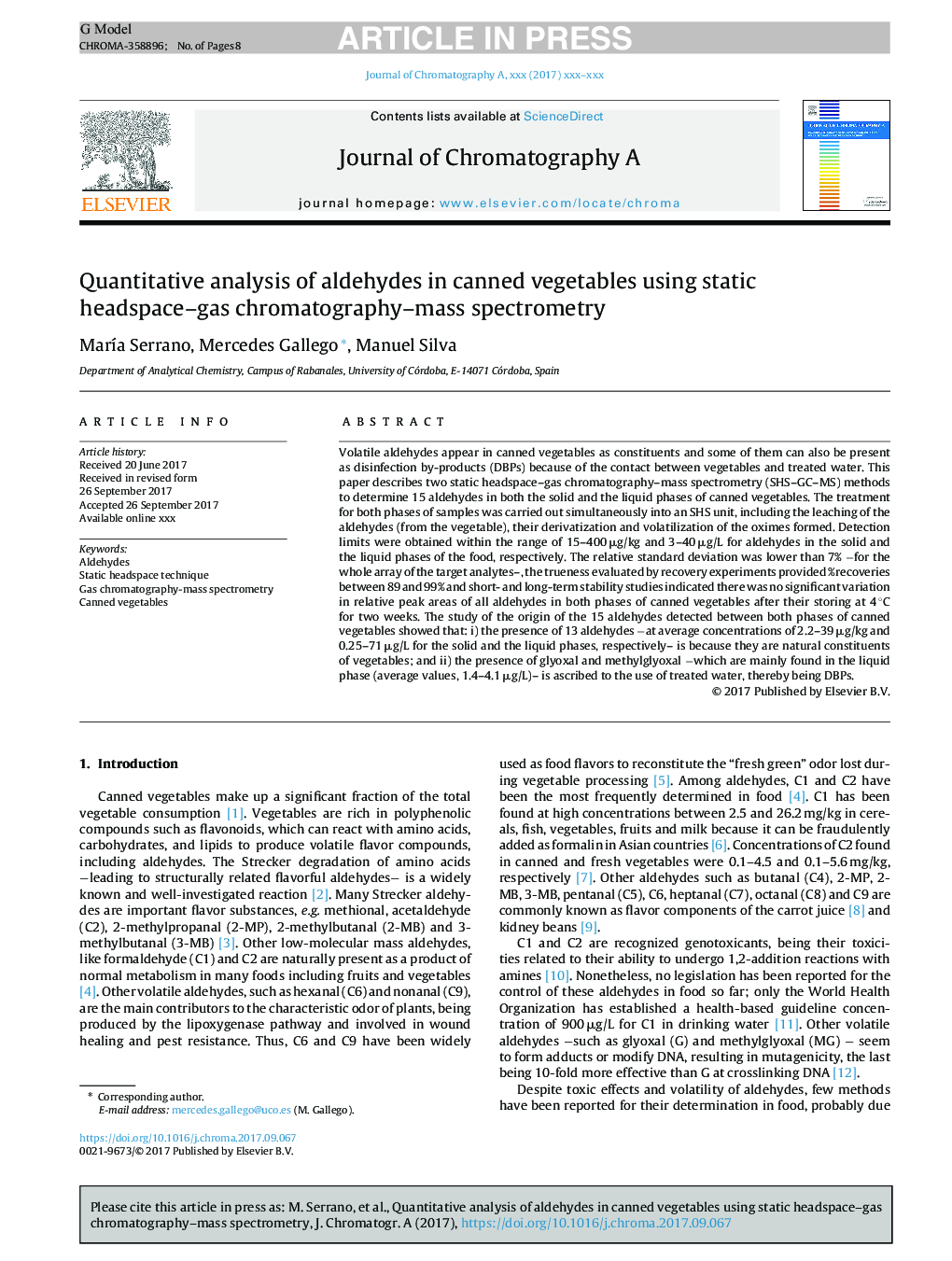| Article ID | Journal | Published Year | Pages | File Type |
|---|---|---|---|---|
| 7609612 | Journal of Chromatography A | 2017 | 8 Pages |
Abstract
Volatile aldehydes appear in canned vegetables as constituents and some of them can also be present as disinfection by-products (DBPs) because of the contact between vegetables and treated water. This paper describes two static headspace-gas chromatography-mass spectrometry (SHS-GC-MS) methods to determine 15 aldehydes in both the solid and the liquid phases of canned vegetables. The treatment for both phases of samples was carried out simultaneously into an SHS unit, including the leaching of the aldehydes (from the vegetable), their derivatization and volatilization of the oximes formed. Detection limits were obtained within the range of 15-400 μg/kg and 3-40 μg/L for aldehydes in the solid and the liquid phases of the food, respectively. The relative standard deviation was lower than 7% âfor the whole array of the target analytes-, the trueness evaluated by recovery experiments provided %recoveries between 89 and 99% and short- and long-term stability studies indicated there was no significant variation in relative peak areas of all aldehydes in both phases of canned vegetables after their storing at 4 °C for two weeks. The study of the origin of the 15 aldehydes detected between both phases of canned vegetables showed that: i) the presence of 13 aldehydes âat average concentrations of 2.2-39 μg/kg and 0.25-71 μg/L for the solid and the liquid phases, respectively- is because they are natural constituents of vegetables; and ii) the presence of glyoxal and methylglyoxal âwhich are mainly found in the liquid phase (average values, 1.4-4.1 μg/L)- is ascribed to the use of treated water, thereby being DBPs.
Related Topics
Physical Sciences and Engineering
Chemistry
Analytical Chemistry
Authors
MarÃa Serrano, Mercedes Gallego, Manuel Silva,
